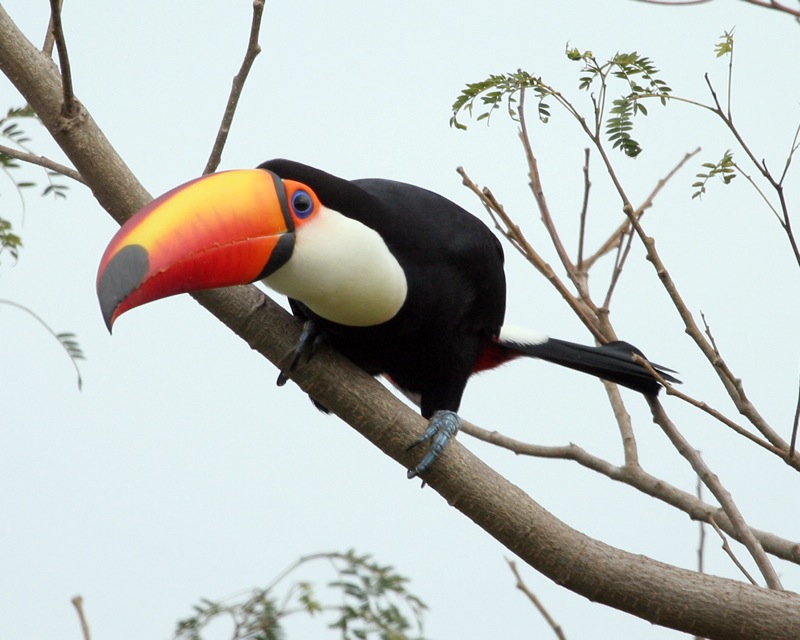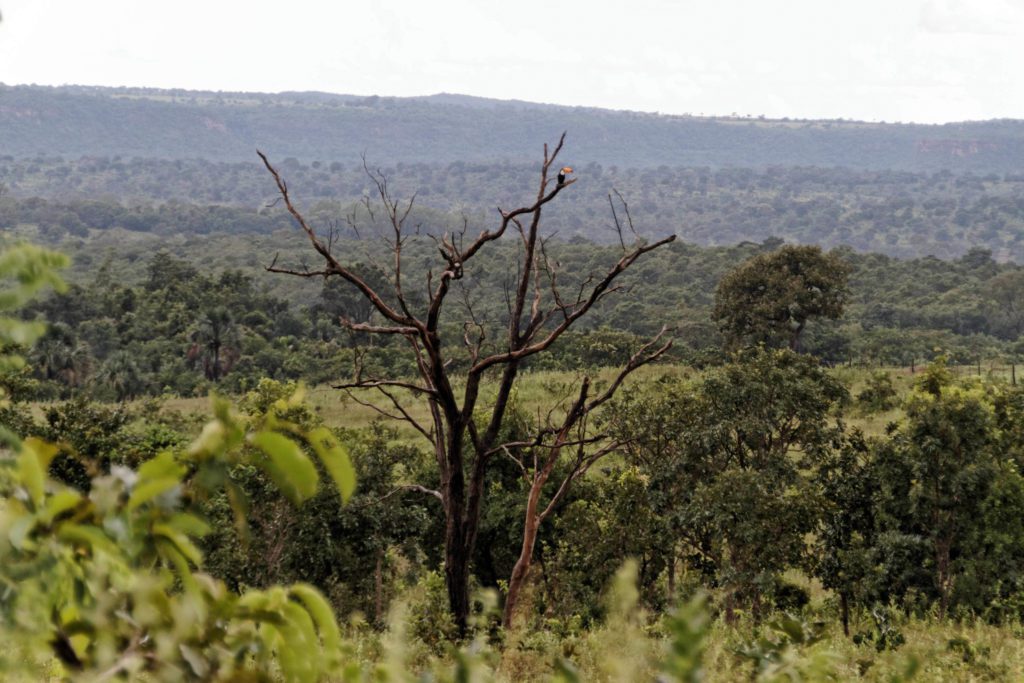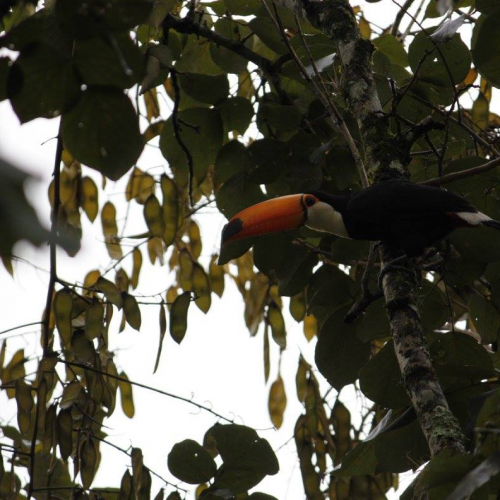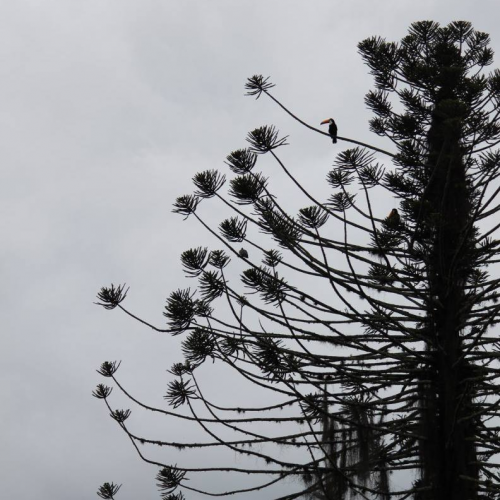Toco Toucan
Toco toucans are the characteristic toucan species, but unlike other members of their family, they are not forest birds. In truth, the Toco Toucan is as much a forest bird as an Eastern Bluebird. Their grasslands of preference just happen to have trees.
Cerrado, the Brazilian orchard

The wide range of the Toco Toucan correlates to the availability of fleshy fruits, their preferred food source. Insects and other fleshy foods augment that diet of fruit, making them an occasional nest predator of other cavity dwellers too.
These toucans share their savanna habitats with birds like the Grassland Sparrow, Striped Cuckoo, Masked Yellowthroat, Grassland Yellowfinch, and Wedge-tailed Grassfinch. Open habitats like gallery forests and capões (cultivated land) see them perching on towering trees, and it’s not uncommon to spot them flying over open fields and large rivers in a single file line, undulating like woodpeckers.

Socialization
As fruits ripen across the seasons, Toco Toucans drift through the orchard-like savannas in small groups looking for the next wave of fruits and dodging predators like caracaras and monkeys.
While they stay in pairs during breeding, they form flocks up to a dozen once the young fledge. They keep in contact with their loud vocalizations that carry through the ecosystems. As for their bright, flame-orange beaks, the hollow pneumatic structure certainly helps resonate their loud mooing calls, and with tons of blood vessels, it likely helps disperse heat too.

Ecosystem Builders
These traits together–their social habits, wandering, fruity diet–place the Toco Toucan in an interesting ecological niche for the cerrado: ecosystem builders.
Seeking and consuming fruits, they contribute in a huge way to the pattern and distribution of the plants that make the cerrado so unique.
Entangled with the Hyacinth Macaw
As ecosystem builders, the toucans enter into complicated system-level relationships with some of the species that share their home. In the Pantanal, the famous flooded grasslands of Central Brazil, the endangered Hyacinth Macaw sits at the precarious center of the Toco Toucan’s niche.
Hyacinth Macaws make their nest almost exclusively in natural hollows of the manduvi tree (Sterculia apetala), and in 2007 researchers found that seed dispersal for manduvi trees depends on… wait for it… the Toco Toucan. With 87% of all seed dispersal for this plant happening through toco toucans, this appears to be an ecological specialization.
A specialization complicated by the fact that Toco Toucans are also responsible for about 53% of destroyed macaw eggs.
This precarious ecological conflict leaves the Hyacinth Macaw indirectly dependent on its nest predator. It’s a subtle link, but it illustrates how critical studies of these animals in their habitats and systems are. How they interact within their species-rich environments is so important to understand.

Toco Toucans show us, if nothing else, that understanding an animal cannot happen without examining their place in their ecosystems.
This species is iconic and beloved on its own, but more importantly it’s a dynamic piece of a complex, rich environment. Which makes these grassland toucans all the more incredible.
Sources/Further Reading:
- Pizo, M. A., Donatti, C. I., Guedes, N. M. R., & Galetti, M. (2008). Conservation puzzle: Endangered hyacinth macaw depends on its nest predator for reproduction. Biological Conservation, 141(3), 792–796. doi:10.1016/j.biocon.2007.12.023
- https://www.worldlandtrust.org/news/2016/10/toco-toucans-found-nesting-near-regua/
- WikiAves: A Enciclopedia das Aves do Brasil
- Animal Diversity Web: Ramphastos toco
- Trupkiewicz, J., Garner, M. M., & Juan-Sallés, C. (2018). Passeriformes, Caprimulgiformes, Coraciiformes, Piciformes, Bucerotiformes, and Apodiformes. Pathology of Wildlife and Zoo Animals, 799–823. doi:10.1016/b978-0-12-805306-5.00033-x
Did you spot an error or have questions about this post? Email Rachel Roth.
